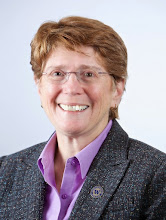A new study looks at felony defendants in state and federal court. Contrary to common beliefs that criminal defendants who choose to represent themselves are mentally ill and/or foolish, the author finds that they do pretty well -- sometimes even better than represented defendants. Erica J. Hashimoto, Defending the Right to Self Representation: An Empirical Look at the Pro Se Felony Defendant. North Carolina Law Review, Forthcoming (45 N. Car. L. Rev. 423). Available at SSRN: http://ssrn.com/abstract=901610.
Here is Prof. Hashimoto's abstract of the article:
Why would a criminal defendant waive the right to counsel and proceed pro se? Conventional wisdom assumes that there is no good reason for a defendant to choose self-representation, and those who make that choice are therefore either mentally ill or foolish. Courtroom proceedings in cases of high-profile pro se defendants like Colin Ferguson and, more recently, Zacarias Moussaoui and John Muhammad, have only increased the dominance of this prevailing view. Even the Supreme Court has assumed that the right to self-representation in practice hurts, rather than helps, criminal defendants. Until now, however, no empirical study has examined the phenomenon of self-representation.Some decisions to appear pro se are based on concerns about court-appointed counsel (often underfunded and overworked and sometimes just incompetent). Often the pro se defendants have requested other counsel.
This Article presents the results of the first comprehensive study of pro se felony defendants. The data clearly refute both the assumption that most felony pro se defendants are ill-served by the decision to self-represent and the theory that most pro se defendants suffer from mental illness. Somewhat surprisingly, the evidence establishes that pro se felony defendants in state court do just as well as represented felony defendants, and the vast majority of pro se felony defendants - nearly 80% - displayed no signs of mental illness. The results of the study also provide an alternative explanation for the pro se phenomenon, suggesting that at least some defendants choose self-representation because of legitimate concerns about counsel. In short, the data in this Article expose the fallacy of the prevailing view of pro se felony defendants and demonstrate that the right to self-representation in fact serves a vital role in protecting the rights of criminal defendants.
Other decisions may be based on ideological grounds. For instance, 20% of federal pro se defendants are accused of tax crimes, but only .7% of represented defendants are.
Prof. Hashimoto concludes with recommendations for actions courts should take to ensure that the decision to go pro se is knowing and voluntary.
Thanks: Michael Heise, Empirical Legal Studies.




